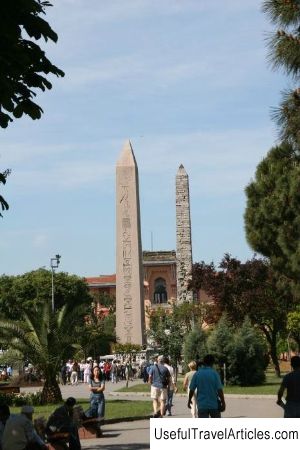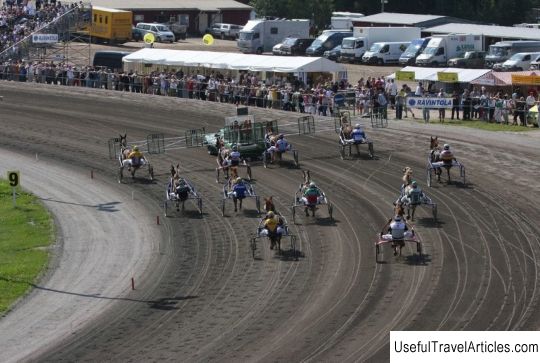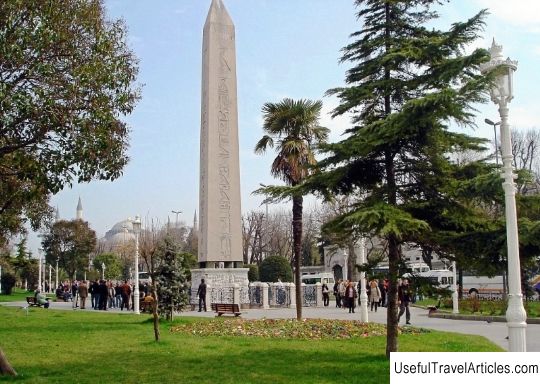Hippodrome description and photos - Turkey: Istanbul
Rating: 8,3/10 (201 votes) 
Hippodrome description and photos - Turkey: Istanbul. Detailed information about the attraction. Description, photographs and a map showing the nearest significant objects. The name in English is Hippodrome. Photo and descriptionThe Greeks and Romans often organized chariot races, and therefore the Hippodrome was a characteristic feature of a large polis (city). In 203, Septimius Sever began to restore the city he had destroyed, and the first thing he did was start building the Hippodrome. Constantine I made the territory of the Hippodrome bigger and more beautiful. During his reign, the Hippodrome was about 500 meters long and 130 meters wide. The treadmills were U-shaped. They surrounded the spectator stands for 40,000 spectators. The luxurious box of the emperor was located on the southeast side and connected to the palace. For a long time, the Hippodrome was the center of social and sports life of the capital of the Byzantine Empire. Chariot races, gladiator fights with wild animals were held on it, as well as performances by artists, acrobats, musicians and solemn ceremonies were held. Gradually, the townspeople were divided into two teams of fans - "blue" and "green". The popular teams that took part in the races were dressed in clothes of these very colors. Often the clashes of the "fans" were of a political and religious nature, accompanied by riots, pogroms and bloody massacres. During one such major pogrom, which occurred in 532, a fire broke out, half of the city burned down, and about 30,000 people died. The imperial residence was moved from the Grand Palace and the Hippodrome began to collapse. In 1204, the participants of the IV Crusade finally destroyed and plundered the Hippodrome. The Ottomans who occupied Constantinople were not fond of chariot races, therefore they were not engaged in the restoration of the Hippodrome, which turned into a source of marble, columns and stone blocks for construction. After the Sultanahmet Mosque was built, the site of the former Hippodrome was called At Meydan (Horse Square). Horse trainings and various mass events were held here. Today this square is called Sultanahmed Meidani (Sultanahmed Square). The tracks of the Hippodrome were covered with earth (layer thickness 4-5 meters) and a huge park was created. Only the ruins of arches and fragments of walls have survived from the Hippodrome. Once upon a time, the wall of the Hippodrome, which bears the name "Back", was decorated with monuments, statues, obelisks, hourglasses and other trophies. The Egyptian obelisk (height 20 meters), the column of Constantine Porfirogenet (height 32 meters) and the Serpentine column from the Temple of Apollo have survived to this day. Also survived are 4 bronze horses (4th century BC), which were installed on the roof of the starting rooms of the Hippodrome. In 1204, the crusaders kidnapped bronze horses and installed them on the facade of St. Mark's Cathedral in Venice. But in 1797 Napoleon conquered Italy and ordered the horses to be installed on the Carousel Arch in Paris. And in 1815 the horses were returned to Venice and today they are in the Museum of St. Mark.       We also recommend reading House-Museum of the artist Georgi Velchev description and photos - Bulgaria: Varna Topic: Hippodrome description and photos - Turkey: Istanbul. |




